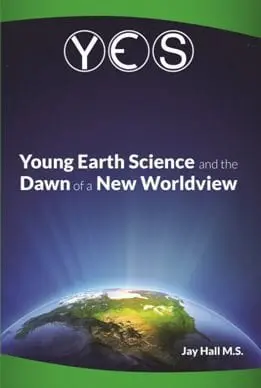Is the Bible a textbook for biology, botany or geology? No, but there are many scientific truths in Scripture. When we think of science in the Bible we often think of examples like the circuits of wind flow (Eccl. 1:6), the life is in the blood (Lev. 17:11) and the importance of hygiene (Lev. 15:13). Have you considered Isaiah 28:24-29 in this regard?
Is. 28:24-29 (NKJV):
24 Does the plowman keep plowing all day to sow? Does he keep turning his soil and breaking the clods?
25 When he has leveled its surface, Does he not sow the black cummin And scatter the cummin, Plant the wheat in rows, The barley in the appointed place, And the spelt [rye?] in its place?
26 For He instructs him in right judgment, His God teaches him.
27 For the black cummin is not threshed with a threshing sledge, Nor is a cartwheel rolled over the cummin; But the black cummin is beaten out with a stick, And the cummin with a rod.
28 Bread flour must be ground; Therefore he does not thresh it forever, Break it with his cartwheel, Or crush it with his horsemen.
29 This also comes from the LORD of hosts, Who is wonderful in counsel and excellent in guidance.
Comments:
v. 24: Timing is important in farming and this gives a motivation to know astronomy which helps us track the seasons (Ge 1:14). Farming has existed from the beginning (Ge 3:23, 4:2) and experiment improves agricultural methods.
v. 25: The location of where various grains are planted is important. Planting is rows is an orderly arrangement. What should be planted on the border? Trees or potatoes?
v. 26: God made man in his image and gives him wisdom and understanding (Job 38:36). The all-wise God gave us reason and the ability to discern the structure on the world. The cosmos is not random, but ordered. The Lord may have communicated the basics of horticulture to Adam during the “cool of the day” (Ge 3:8). Language and technical skill have been transmitted from father to son, parent to child for thousands of years. Some isolated people groups do not farm at all – the skill has been lost.
v. 27: Through experiment and experience we learn that we must use the right tool for the right job. You don’t kill termites with sledgehammers.
v. 28: Various grains must be treated differently. Distinct methods fit corn versus cotton. Many things in creation remind of us wheels. Design in creation can inspire human inventions. Many things are cone shaped (carrots, pine cones) and a truncated cone makes a great millstone.
v. 29: Science is possible because God gives us a sense that the Maker of the universe is a God of order and purpose. The equations of creation are not random. Consider the simplicity of Snell’s Law. Design in nature exhibits the fact that God is “wonderful in counsel and excellent in guidance.” Consider the photosynthetic sea slug.
Many evolutionists may say “I can’t read the Bible – that’s just myth.” But the Bible actually gives science its logical foundation. The basis of science is biblical. God’s Word is revealed truth from the Creator of the Cosmos. If we want to know about the beginning we must go to the Bible. Scripture gives us true truth, for God cannot lie (Num. 23:19). Many are over-awed by scientific experts who pronounce the fact of evolution in the past, even though they were not witnesses to the events they describe. In the end, Darwinian “wisdom” will perish (2 Peter 3). The spurious speculations of the sages of science will ultimately fail.
We can’t hide our sin from God (Num. 32:23). Could it be that the motivation for many who accept the molecules-to-man view of origins wish to explain God away to justify their ungodly lifestyle? You may have a Ph.D. in Biochemistry, but the Lord of heaven and earth knows infinitely more than you do. Christmas is about Jesus and the Babe of Bethlehem is in control of the universe, not man.
 Read Jay Hall’s book:
Read Jay Hall’s book:
YES – Young Earth Science and the Dawn of a New World View
What is Young Earth Science (YES)? How old is the world? Are radiometric dating methods reliable? Is Darwinism substantiated by scientific evidence and valid arguments? How does the Renaissance of Catastrophism relate to the age of the Earth? Has plate tectonics occurred more rapidly in the past? These and other queries are answered in this exciting new fully documented work. This widely illustrated book features support from history, philosophy, geology, biology and physics. Discover this creative and multidisciplinary approach which provides affirmation that this planet is thousands of years old and not billions . . . (continue reading)







